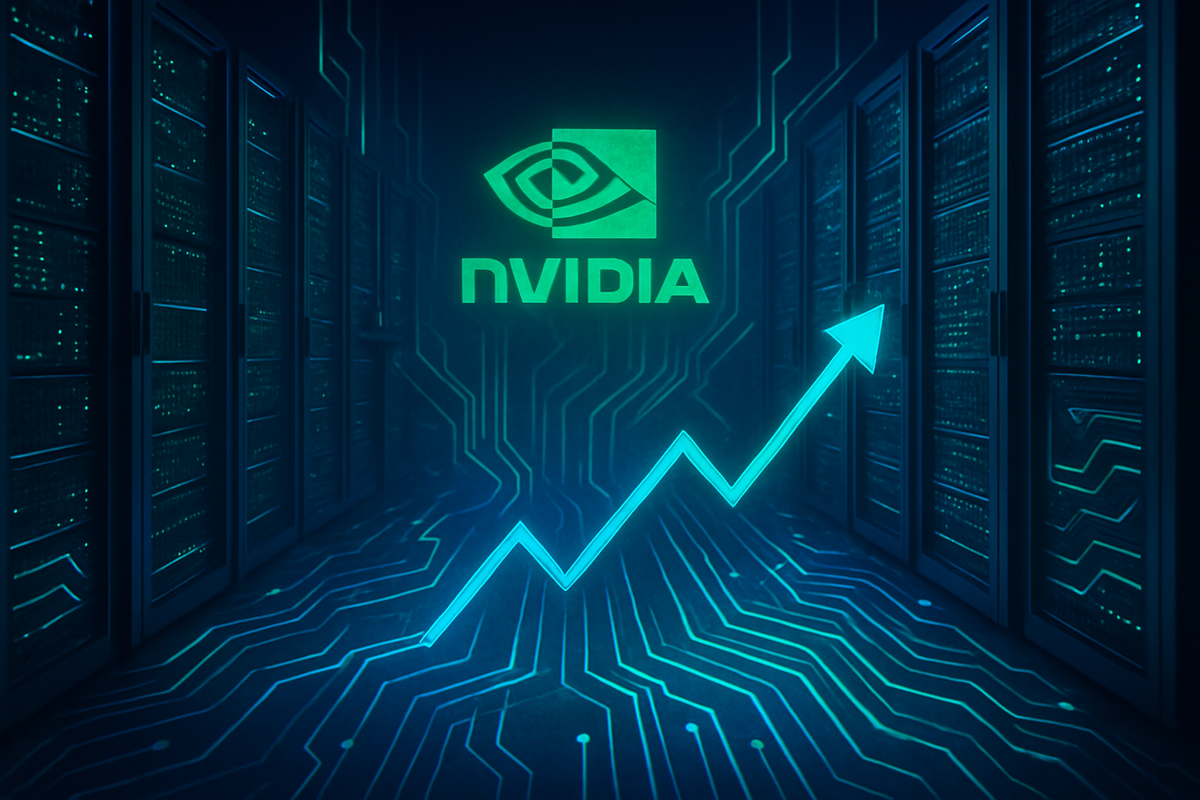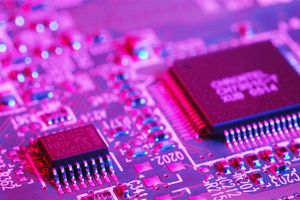
October 20, 2025 – In a testament to its unyielding grip on the artificial intelligence (AI) and high-performance computing (HPC) sectors, Nvidia (NASDAQ: NVDA) has once again emerged as a top performer in today's stock market, with its shares experiencing a significant surge. This impressive rally underscores the market's robust confidence in Nvidia's foundational technology and its pivotal role in shaping the future of digital infrastructure. The positive sentiment surrounding the semiconductor giant is palpable, with investors eyeing potential new buy points as the company continues to redefine industry standards.
Today's upward trajectory for Nvidia is not an isolated event but rather a continuation of a multi-year trend driven by insatiable demand for its cutting-edge Graphics Processing Units (GPUs) and its comprehensive software ecosystem, CUDA. The company's strategic positioning at the heart of the generative AI boom and the relentless expansion of data centers globally have solidified its status as an indispensable technology provider, translating directly into exceptional financial performance and investor optimism.
The AI Engine Roars: Decoding Nvidia's Ascent
Nvidia's remarkable performance today is deeply rooted in several interconnected factors, primarily its near-monopolistic hold on the hardware essential for advanced AI and deep learning. The company's GPUs are the workhorses behind the training and deployment of complex AI models, making them critical for cloud computing providers, major tech companies, and enterprises across diverse sectors like healthcare, finance, and autonomous vehicles. This dominance has positioned Nvidia as the architect of the AI factories that power the modern digital economy.
The timeline of Nvidia's ascent has been marked by continuous innovation, from its early days in gaming graphics to its strategic pivot and aggressive investment in parallel computing and AI. This foresight led to the development of its powerful Data Center segment, which has become its primary revenue driver, accounting for roughly 88% of its total revenue in fiscal year 2025. Key players in this narrative include CEO Jensen Huang, whose vision has steered the company, and countless researchers and developers who rely on Nvidia's CUDA platform, which creates a powerful moat around its hardware. Initial market reactions to Nvidia's sustained growth are consistently bullish, often leading to upward revisions of price targets by analysts and a "Strong Buy" consensus, reflecting the belief that the AI revolution is still in its early stages and Nvidia is its primary enabler.
Market Ripple Effects: Winners and Challengers
Nvidia's continued market leadership and stock performance create a significant ripple effect across the technology landscape. The most obvious winners are the major cloud service providers such as Amazon Web Services (AWS) (NASDAQ: AMZN), Microsoft Azure (NASDAQ: MSFT), and Google Cloud (NASDAQ: GOOGL), all of whom are massive customers for Nvidia's data center GPUs. Their ability to offer leading-edge AI capabilities to their clients is directly tied to their access to Nvidia's hardware, making Nvidia's success partially their own. AI startups and research institutions also benefit immensely, as Nvidia's platforms provide the computational horsepower necessary to innovate and bring new AI applications to market.
Conversely, competitors like Advanced Micro Devices (NASDAQ: AMD) and Intel (NASDAQ: INTC) face an uphill battle. While both companies are making strides in their AI accelerator offerings, Nvidia's established ecosystem, performance benchmarks, and market share present a formidable challenge. Companies that have invested heavily in alternative architectures or are slower to adapt to the accelerating demand for AI-specific hardware may find themselves losing ground. Furthermore, geopolitical tensions, particularly U.S.-China trade restrictions, have significantly impacted Nvidia's AI GPU market share in China, forcing the company to develop specialized chips for that market and creating opportunities for domestic competitors.
Broader Industry Significance and Future Trajectories
Nvidia's consistent outperformance fits perfectly into the broader industry trend of accelerating digital transformation and the pervasive integration of AI across all sectors. The demand for high-performance computing is not just a passing fad but a fundamental shift in how businesses operate, how research is conducted, and how new products are developed. Nvidia's full-stack approach, combining powerful hardware with its extensive CUDA software platform, has become a de facto standard, setting a high bar for competitors and driving innovation across the entire semiconductor industry.
Potential ripple effects extend to the entire supply chain, from raw material providers to manufacturing partners, who must scale to meet Nvidia's immense demand. Regulatory bodies are also increasingly scrutinizing the dominance of key players in critical technologies like AI, which could lead to policy implications regarding competition and market access in the future. Historically, periods of rapid technological advancement often see one or two companies emerge as dominant forces, similar to Intel's rise in the PC era or Microsoft's in software, suggesting Nvidia's current trajectory is a classic example of a company capitalizing on a paradigm shift.
What Comes Next: Navigating the AI Frontier
In the short term, investors can anticipate continued strong demand for Nvidia's AI chips, driven by ongoing investments from cloud providers and enterprises building out their AI infrastructure. The company's new platforms, such as the Blackwell architecture, are expected to further solidify its technological lead and drive revenue growth. Strategically, Nvidia will likely continue to expand its software offerings and deepen its ecosystem, making it even harder for rivals to compete solely on hardware.
Looking further ahead, the long-term possibilities for Nvidia are vast, extending into areas like robotics, industrial automation, and the metaverse, where its simulation and rendering capabilities are crucial. However, challenges will undoubtedly emerge, including intensified competition, potential supply chain vulnerabilities, and the need to constantly innovate to stay ahead. Market opportunities will arise from new AI applications and vertical markets, while the company may need to adapt to evolving geopolitical landscapes and potential regulatory pressures that could impact its global market access. Scenarios range from continued exponential growth, assuming AI adoption accelerates, to periods of consolidation or increased competition that could temper its meteoric rise.
Comprehensive Wrap-up: A Defining Era for Nvidia
Today's strong performance by Nvidia underscores a critical takeaway: the company remains at the epicenter of the AI revolution, and its technological prowess is unparalleled in the current market. Its leadership in data center GPUs and its robust software ecosystem provide a significant competitive advantage that continues to drive exceptional financial results and investor confidence. The market moving forward will undoubtedly be shaped by the ongoing proliferation of AI, and Nvidia is poised to be a primary beneficiary.
For investors, the key watch points in the coming months will include Nvidia's quarterly earnings reports, particularly the growth trajectory of its Data Center segment, new product announcements, and any shifts in the competitive landscape. Developments in AI model architectures and potential advancements from competitors like AMD and Intel will also be crucial. While valuation concerns always exist given its high growth expectations, Nvidia's strategic position suggests it will remain a pivotal player, making it a stock to watch closely as the world continues its rapid embrace of artificial intelligence.
This content is intended for informational purposes only and is not financial advice





